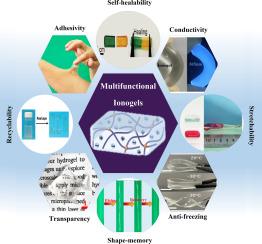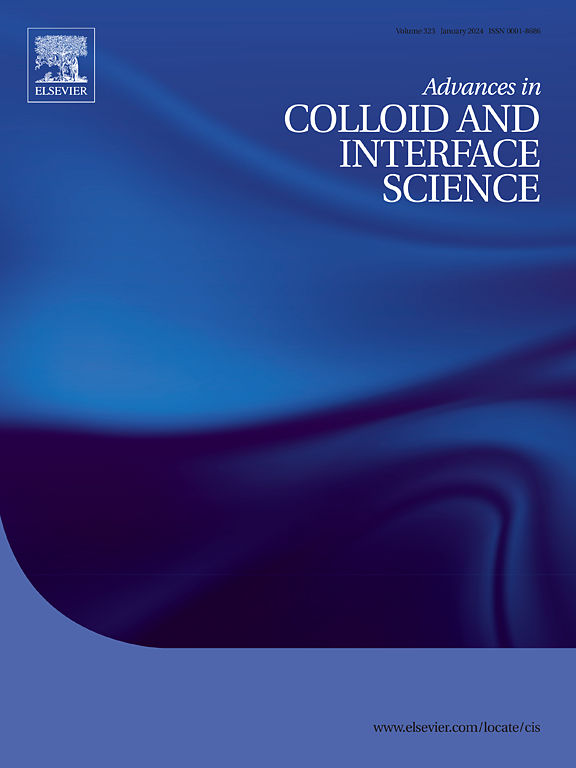Functionalized Ionogels with self-healing performance: Material design, chemistry aspects, applications, and future prospects
IF 19.3
1区 化学
Q1 CHEMISTRY, PHYSICAL
引用次数: 0
Abstract
Nowadays, functionalized ionogels have attracted considerable research attention because of their superior benefits including excellent mechanical properties, conductivity, transparency, stretchability, adhesivity, biocompatibility, recyclability, shape memory, 3D printability, and self-healability. The self-healing performance implements the ability to autonomously repair the damaged ionogels through the covalent or non-covalent reversible bonds without any external intervention at ambient conditions. The healing strategy is influenced by the type of polymer, ionic liquid, and synthesis procedures. The present review introduces the polymers and ionic liquids (ILs) for the preparation of multifunctional ionogels with the focus on self-healing ability. Therefore, the diverse functionalities of ionogels are introduced, followed by the deep delve with strategies of preparation of self-healing ionogels. The potential uses of functionalized self-healing ionogels in wearable electronics and sensors, solid-state electrolytes, triboelectric nanogenerators, lubricating materials, and transistor devices are also discussed. Finally, the developmental prospects of the new generations of functionalized self-healing ionogels for future research are presented. The current review provides insights into the development of a novel generation of material with excellent characteristics for future academic research, and paves the path toward practical applications.

具有自愈性能的功能化电离胶:材料设计、化学方面、应用和未来前景
如今,功能化离子凝胶因其优异的机械性能、导电性、透明性、可拉伸性、粘附性、生物相容性、可回收性、形状记忆性、3D打印性和自愈性等优点而引起了广泛的研究关注。自修复性能实现了在环境条件下通过共价或非共价可逆键自主修复受损电离胶的能力,而无需任何外部干预。愈合策略受聚合物类型、离子液体和合成过程的影响。本文介绍了用于制备多功能离子凝胶的聚合物和离子液体,重点介绍了离子液体的自愈能力。因此,介绍了电离层凝胶的多种功能,并深入探讨了自修复电离层凝胶的制备策略。功能化自修复离子凝胶在可穿戴电子产品和传感器、固态电解质、摩擦纳米发电机、润滑材料和晶体管器件中的潜在用途也进行了讨论。最后,对新一代功能化自愈电离胶的发展前景进行了展望。当前的综述为未来学术研究提供了具有优异特性的新一代材料的发展见解,并为实际应用铺平了道路。
本文章由计算机程序翻译,如有差异,请以英文原文为准。
求助全文
约1分钟内获得全文
求助全文
来源期刊
CiteScore
28.50
自引率
2.60%
发文量
175
审稿时长
31 days
期刊介绍:
"Advances in Colloid and Interface Science" is an international journal that focuses on experimental and theoretical developments in interfacial and colloidal phenomena. The journal covers a wide range of disciplines including biology, chemistry, physics, and technology.
The journal accepts review articles on any topic within the scope of colloid and interface science. These articles should provide an in-depth analysis of the subject matter, offering a critical review of the current state of the field. The author's informed opinion on the topic should also be included. The manuscript should compare and contrast ideas found in the reviewed literature and address the limitations of these ideas.
Typically, the articles published in this journal are written by recognized experts in the field.

 求助内容:
求助内容: 应助结果提醒方式:
应助结果提醒方式:


